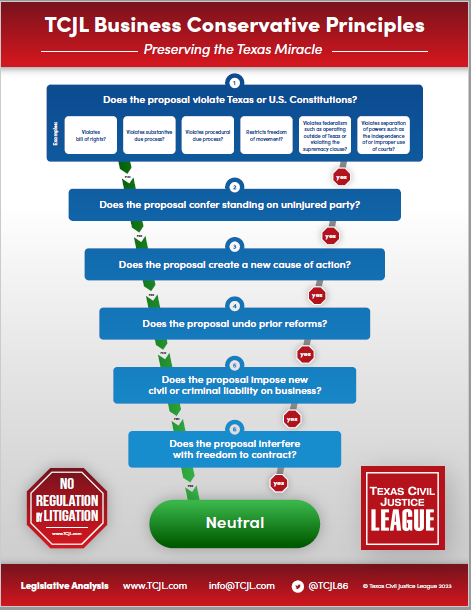 TCJL has filed an amicus curiae brief in the Texas Supreme Court that concerns the availability of discovery of reasonable and customary medical expenses in a personal injury action. The case, In re K&L Auto Crushers LLC and Thomas Gothard, Jr., Relators (No. 19-1022), is a personal injury lawsuit arising out of a motor vehicle accident. The defendant sent subpoenas to the plaintiff’s medical providers seeking discovery of the providers’ reimbursement rates with private insurers and government payers for the medical services and equipment billed by the providers to the plaintiff. A Dallas trial court quashed the subpoenas, and the Dallas Court of Appeals summarily denied the defendant’s petition for writ of mandamus. After asking for and receiving full merits briefing, the Texas Supreme Court set the case for argument on January 5, 2021. The Court also stayed the trial date pending its resolution of the mandamus petition. Thus far, one other amicus brief has been filed by the Texas Association of Defense Counsel.
TCJL has filed an amicus curiae brief in the Texas Supreme Court that concerns the availability of discovery of reasonable and customary medical expenses in a personal injury action. The case, In re K&L Auto Crushers LLC and Thomas Gothard, Jr., Relators (No. 19-1022), is a personal injury lawsuit arising out of a motor vehicle accident. The defendant sent subpoenas to the plaintiff’s medical providers seeking discovery of the providers’ reimbursement rates with private insurers and government payers for the medical services and equipment billed by the providers to the plaintiff. A Dallas trial court quashed the subpoenas, and the Dallas Court of Appeals summarily denied the defendant’s petition for writ of mandamus. After asking for and receiving full merits briefing, the Texas Supreme Court set the case for argument on January 5, 2021. The Court also stayed the trial date pending its resolution of the mandamus petition. Thus far, one other amicus brief has been filed by the Texas Association of Defense Counsel.
TCJL’s brief focuses on a growing trend in personal injury litigation in which claimants evade the paid or incurred rule using tactics that include blocking discovery of relevant and appropriate information regarding third-party reimbursement of health care expenses, as the trial court did in this case. Their objective is to get the chargemaster rate in front of the jury, while preventing the defendant from conducting any discovery of and submitting into evidence either the amount actually “paid or incurred” or the reasonable and customary amount paid for the specific service in the area in which the service was provided. In a related case pending before this Court, in which TCJL has participated as amicus curiae, In re Leon Paul Savoy; Texas Curb Cut, LP; and Texas Cutting & Coring, LP (No. 20-0843), for example, the trial judge, relying on a gross misreading of § 18.001, Civil Practice & Remedies Code, struck the controverting affidavit of the defense medical billing expert regarding the reasonableness of the charges. In such cases, the defendant can only helplessly look on as chargemaster rates that nobody actually pays flow into evidence and end up in the jury room.
These tactics revive relatively low-dollar claims that otherwise would have been settled expeditiously under a proper application of the paid or incurred rule. But not only low-dollar claims. With the prospect of submitting into evidence significantly inflated expenses back in play, we can expect the frequency and severity of claims to start going up again after a period of relative stability. We can also expect defendants to reconsider whether to litigate claims in which liability is a significant issue in light of the increased costs of discovery and higher exposure to inflated health care expense claims. If this practice continues to spread, it will not take long for the paid or incurred rule to become a dead letter, eliminating a foundational part of the 2003 medical and general liability reforms.
A copy of TCJL’s briefs in these two cases can be found here:
